The 5 Best Cheap Binoculars Among Best Sellers On The Market
If you are looking for the best possible binoculars, but maybe it is the first time that you approach this subject, and you have no idea what the best choice is, nor what are the parameters to take into account in order to make a conscious assessment, then this article will be very useful.
Let’s start by saying that, a pair of binoculars is an optical instrument that is used to observe subjects that are at a certain distance and thanks to its use, are enlarged and shown to the end user as faithfully as possible.
Table of Contents
To each his binoculars
When you are about to buy a pair of binoculars, you will need to take into account a whole series of factors, some of which are very technical and the final choice must be the result of careful analysis: there is absolutely no better binoculars because everything depends essentially on the use that we think to do with it.
The binoculars are used in various circumstances: for hiking activities, such as bird waching, rather than hunting, but also for astronomical observations, or to watch a game at the stadium or a theater show.
Consequently, to observe different types of subjects, also depending on the distance of observation from the same and the light that you usually have been available, you will have to understand which aspect is better to focus attention, also based on how much you are willing to spend. Let us briefly analyze all the parameters that, to a more or less marked extent, will influence our decision.
Beware of numbers and their meaning
When one is about to buy a pair of binoculars, one of the first things that immediately catches the eye is that for each one, together with the model name and the brand, a couple of numbers are shown, interspersed with an ” x ” (such as 10×50, 7×35, 8×42).
The first number indicates the magnification power offered by the binoculars: 10x means that the objects you are observing from a certain distance appear magnified 10 times compared to reality. The second number, on the other hand, indicates the diameter of the objective lenses (ie those more distant from the eye) and is expressed in mm (a 10×50 pair of binoculars will have an output lens diameter of 50 mm).
The combination of these two numbers is essential to understand the quality and type of binoculars that we are analyzing: a greater magnification corresponds to a lower brightness of the image and a narrower field of view. Dividing the second number for the first we will obtain a third value, called the ” exit pupil “, which is also expressed in mm and that is essentially the diameter of the optical system image.
Clearly depending on the use that you want to make it will be necessary to orientate on different combinations magnification/objective. The most versatile binoculars are 10×50; while generally those pocket-sized are characterized by 8-10x magnification and 20-25 mm diameters; those used for hiking, hunting and bird watching are usually 8×42 and those intended for astronomical observations have both magnification and diameter of the upper lenses at 10 and 50 respectively.
The larger the diameter of the lens and the more light can enter it, so if you want to use the binoculars to scan the stars, to observe the sunrise or the sunsets or if in any case in situations where you are in poor lighting conditions, it will be good to opt for a big lens.
But be careful to do another type of evaluation: the larger the lens size and the more cumbersome and heavy your binoculars are, so it is not said that you do not agree to opt for a measure that represents a good compromise between manageability and vision.
For which type of lenses is it better to opt?
A fundamental consideration to do when you are about to buy a pair of binoculars is the type of lens you have. The binoculars that are on the market can mount lenses of two different types: those made of plastic and those instead of glass. The majority of products sold glass lenses, because even more expensive are able to return images of superior quality compared to plastic ones.
The major problem of glass lenses is due to the reflective properties of light, but this drawback can be remedied with an anti-reflective treatment.
There are some acronyms, which are used to identify the type of anti-reflective treatment to which the lenses have been subjected: C means that only a single anti-reflective layer has been applied to certain lenses; FC instead means that all the lenses have been coated; MC indicates that only a few layers have been applied to some lenses and to finish off FMC indicates that all the lenses have been applied multiple layers of anti-reflection, so binoculars with lenses of this type are the best, but also the most expensive.
Plastic lenses, in general, return images of inferior quality, but they are cheaper and more resistant than glass, so you can evaluate a pair of binoculars that mounts if you need to buy a very robust product ( as in the case in which you take it with you for a climb in the high mountains) or very cheap (maybe to give to a child).
Eye relief of binoculars: what it is and what is the most performing value
When we talk about Eye relief, we refer to a numerical value (normally between 5 and 20 mm), which indicates the distance at which the eyepiece lenses will have to be held with respect to our eyes. Having a greater eye relief increases comfort in vision, as it is possible to hold the binoculars further away from the face.
For this reason, those who usually wear eyeglasses, it is good that they are oriented towards the purchase of binoculars with a higher eye relief (equal to or greater than 14-15 mm, since the glasses are normally about 10 mm from the face).
Another precaution for those wearing glasses is to choose a model that allows you to lower and / or remove the rubber shells that surround the eyepieces, as if they can normally be a useful accessory for those who wear glasses are annoying and obstructive vision.
Focus and type of prisms
Also with regard to focusing the binoculars can be very different from each other depending on the system they use. First of all, it is good to clarify that there are so-called ” fixed focus ” products that do not include the regulation of the focus.
Most of the binoculars on the market instead has a central focus, where the adjustment is done by turning a wheel positioned in the middle between the two tubes of the binoculars. Finally, for the most professional binoculars models, there is often the possibility of individual focusing, that is, separate for each eye, so that an optimal image can be restored.
To deal with the prism discourse, on the other hand, it is necessary to make a premise: a pair of binoculars consists of a series of lenses, through which the image we are observing passes and is returned to us: we find first the front lenses (which are those directly facing the object we are observing); then internally there are the prisms, which are those objects that allow you to straighten the image and finally the eyepieces, which are the lenses to which we approach the eyes and which establish the magnification ratio of the binoculars.
In the market, there are also binoculars without prisms (called Galilean), which are generally used in the theater, but prismatic binoculars are those able to provide maximum performance and greater magnification and are commonly used in naturalistic observations, for hiking, hunting or bird watching.
So the two types of prisms used in the construction of the binoculars are substantially two. The binoculars that mount Porro prisms (designed in 1800 by the famous Italian optician Paolo Ignazio Pietro Porro) have a classic shape, characterized by well-separated lenses and eyepieces positioned on a different axis to the objectives. Roof prisms are a more recent discovery and allow the binoculars that use them to have a straight, much more compact hull and a more captivating and modern look.
The value of Porro prisms is that they return a greater three-dimensionality of the image, and at the same optical yield, they have a decidedly lower cost, because they are easier to construct.
While binoculars with roof prisms, for the same lens size, are much lighter and more compact, they have a better ability to focus on infinitely positioned objects, such as the sky and reduce the splitting effect, which in general it is generated in the observation of subjects positioned at the minimum focusing distance.
How much does a good pair of binoculars cost?
Obviously, it is difficult to establish a priori. What is the right price for a pair of binoculars, because as you can understand, there are many different models on the market, and it is not absolutely certain that an expensive and super-equipped model can be the most suitable use that you wish to make of it. The variables that come into play when choosing the perfect binoculars, or better than the one that most suits you, are numerous and consequently, the cost varies according to these.
It will be necessary to consider: the brand, the model, the type and the quality of lenses that it mounts, the technical characteristics of the product, the materials with which it is made, its strength, practicality and ease of use, the presence or absence of accessories and special functions, etc …
In general, it can be said that the price of the most professional binoculars stands at values starting from $300-$500, but that can easily reach even $1000-$2000 and more.
This does not mean that there are not many binoculars on sale even under $100(from $50-$60), although on average, the cost for an article of this type is around $200.
Once you have established which binoculars are the most suitable for us, you can search the Internet for the best price; buying online sometimes allows significant savings, but the advice is always to try the binoculars in person before buying it, because as we have seen it is said that a super expensive and preformed model is good for everyone!
Comparison of five of the best-selling binoculars
Below you will find what we considered to be five of the best possible binoculars, remaining in a range of fairly cheap products, but still guaranteeing good performance, also because it refers to some of the best brands of binoculars on the market.
Obviously, it is not an absolute evaluation; each one must make a personal classification according to the personal needs and the type of use that their binoculars want to do. For each of the five products that follow, we tried to summarize the main features, highlighting their strengths and weaknesses.
Celestron UpClose G2 10-30×50 Zoom Porro Binoculars
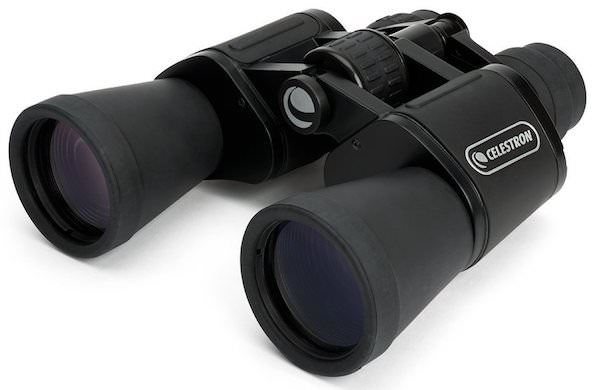 The Celestron UpClose G2 is a wide-angle binoculars, with central focus and Porro prisms, equipped with multi-coated anti-reflection lenses. This is a product with a rather low price, but which guarantees good performance and for this reason, it is one of the most sold binoculars to date.
The Celestron UpClose G2 is a wide-angle binoculars, with central focus and Porro prisms, equipped with multi-coated anti-reflection lenses. This is a product with a rather low price, but which guarantees good performance and for this reason, it is one of the most sold binoculars to date.
On the other hand, the combination that characterizes it between the lens diameter (50 mm) and enlargements (10x) is one of the most versatile, offering a good brightness even in cases of lighting shortage and a wide field of vision (6, 8th or 118 but a distance of 1 km), which returns sharp and contrasted images.
The body of the binoculars is made of aluminum and is covered with a protective rubber, which guarantees, in addition to its impermeability (resistant to light rain and splashes of water) and protection from minor impacts, also a smoother handle, safe and anti-slip.
As for the weight, we are dealing with not particularly heavy binoculars (764 g), but the same cannot be said for the size: certainly not a ” pocket ” product, since its maximum size is 8 cm in width and 18.5 in length.
It can be mounted on a tripod or other fixed support, using a special adapter to attach to the grooves on the lower part of the binoculars body. Also due to its size, it is more congenial as binoculars for observations from a fixed location, although it is also widely used for excursions and bird watching. It can also be used for amateur astronomical observations, as for this type of activity, it would be preferable to have some extra magnification, but above all more brightness.
This binoculars is sold complete with some accessories, namely: a case and a shoulder strap, both made of nylon and designed to facilitate its transport, but also the protections for the lenses (both for the lens and for the eyepiece) and a cloth useful for cleaning them.
Bushnell Performance Optics Falcon Binoculars
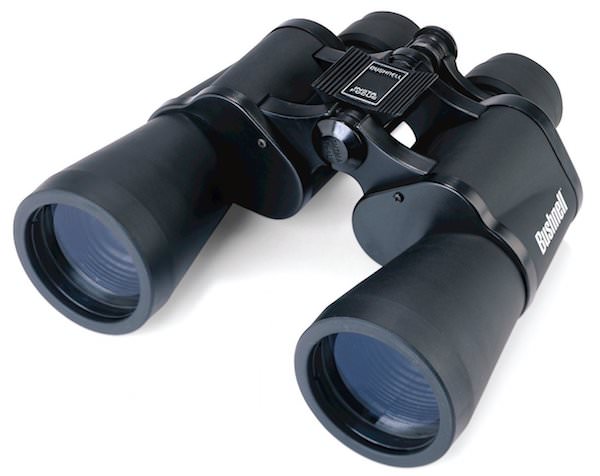 The Bushnell Falcon 10×50 is an amateur binoculars, made with prisms of Porro and fixed focus. Its price is very low and also for this is one of the best-selling binoculars.
The Bushnell Falcon 10×50 is an amateur binoculars, made with prisms of Porro and fixed focus. Its price is very low and also for this is one of the best-selling binoculars.
One of its major limitations regards the construction aspect: the plastic parts are not very solid, and that’s why the Bushnell Falcon 10X50 can be a little too fragile and shock-sensitive, even considering that the supplied enclosure is perhaps a little stuffed and too soft.
Despite this, the optical part is of good quality: the lenses are made of BaK-7 glass, with a single-layer anti-reflective coating, as well as Porro prisms. It should be noted that, unlike many other products belonging to the same price range, it is equipped for use with fixed supports, or tripod.
A small flaw lies in the fact that the cups of the eyepieces are definitely a little limited, reaching a maximum of up to 9 mm of extraction, which makes this binoculars not particularly suitable for those with vision problems.
Moreover, the fact that it is a fixed-focus instrument, if, on the one hand makes it an ideal object for those situations where it is necessary to focus very quickly, like bird watching or hunting, on the other it implies that from another part of the lens is a flexible and fast human eye in adaptation, so it is not an object that goes well without distinction for everyone.
Thanks to the discrete rendering of the image it is able to provide and to its depth of field, it is also suitable for landscape and maritime observation. The field of view of the Bushnell Falcon 10×50 is not particularly performing for this magnification/lens combination; the weight is not excessive and equal to 830 g, but the dimensions appear to be rather generous (20.3×17.1 cm).
Steiner Safari UltraSharp 10×26 Binoculars
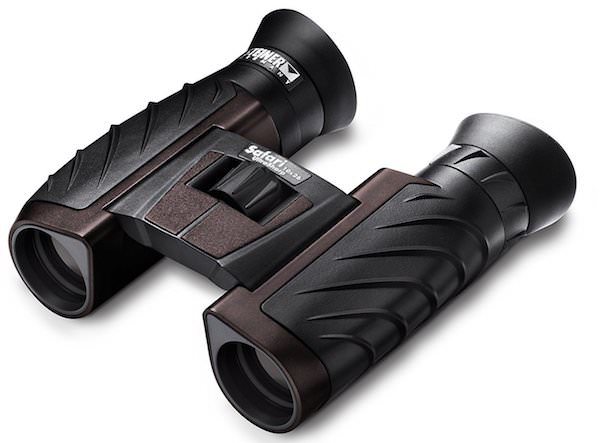 The Steiner Safari UltraSharp 10×26 binoculars, is part of a series of binoculars of the same brand, which are each characterized by different magnifications, but they are all versatile and easy to use.
The Steiner Safari UltraSharp 10×26 binoculars, is part of a series of binoculars of the same brand, which are each characterized by different magnifications, but they are all versatile and easy to use.
The world-famous Steiner lenses ensure maximum performance, sharp images and precise colors; moreover, we are dealing with a decidedly robust product.
The eye relief of this binoculars is 11 mm slightly lower than many other models of the same category; although this value is more than sufficient for the majority of users, it is recommended to try it before buying it, especially if you wear glasses.
Of course, among the binoculars analyzed here is the most compact and lightweight, by virtue of its featherweight (295 g) and its small size of 11.6×12 cm, which make it the perfect tool for lovers of travel, as it can also be stored in your pocket. Nevertheless, it guarantees a good magnification (10 times the reality), and the combination of these characteristics makes it versatile and particularly suitable for hiking, Safari, but also for watching sports events.
Olympus Trooper 10×50 DPS I Binoculars
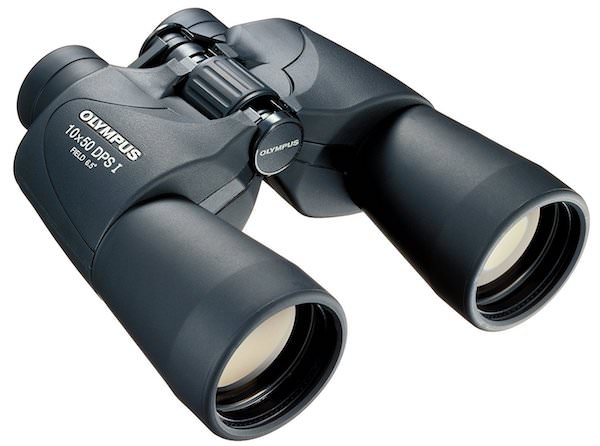 The Olympus Trooper 10×50 DPS I is a good product, cheap but able to give clear and clear images. It is a pair of Porro prisms, quadrangular (although the field of vision is not the best), equipped with anti-reflection lenses, with multi-layer coating to provide maximum brightness and contrast and also UV coatings to protect the eyes from the rays of the sun.
The Olympus Trooper 10×50 DPS I is a good product, cheap but able to give clear and clear images. It is a pair of Porro prisms, quadrangular (although the field of vision is not the best), equipped with anti-reflection lenses, with multi-layer coating to provide maximum brightness and contrast and also UV coatings to protect the eyes from the rays of the sun.
It is able to guarantee a simple adjustment of the focus by means of a central wheel and at the same time a high power of magnification. Among the products in its category offers one of the best image qualities, although it is advisable to hold it by holding the elbows resting on the chest in order to reduce flicker, especially if you are observing a moving object.
It should be noted that the Olympus Trooper 10×50 DPS I was probably designed for people of large size and with a particularly large face, so it may be difficult to use for small people, not only for the size of the eyepieces, but also because the handle is quite wide, so it is not so easy to maintain a firm grip while trying to adjust the focus.
A small flaw to be found in the fact that the zoom is very powerful, makes the images wobble a little, but this inconvenience is easily overcome if you use it fixed on a tripod.
With the Olympus Trooper 10×50 DPS I it is possible to make observations under various lighting conditions, even in low-light conditions, such as sunrise or sunset. It can be considered suitable for bird watching and hiking, even if with the same performances, you can find more compact products on the market (its dimensions are 19.1×17.8 cm and its weight is equal to 855 g).
Nikon ACULON 10-22X50 Binoculars
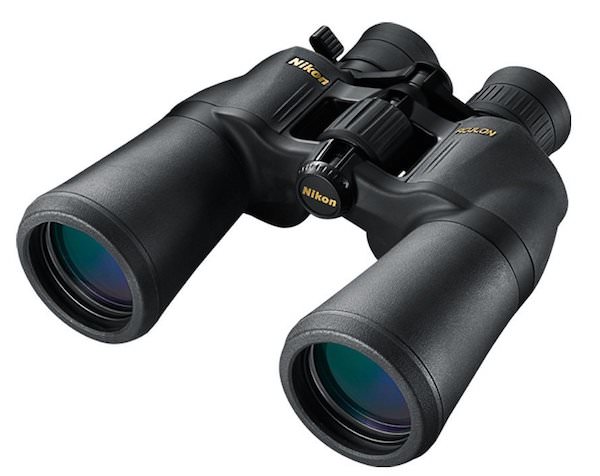 The most expensive among the analyzed binoculars, but that in any case compared to the offered performances certainly is not a dear product, is the Nikon Aculon 10-22×50: reliable and extremely versatile can serve various purposes and is suitable for everyone.
The most expensive among the analyzed binoculars, but that in any case compared to the offered performances certainly is not a dear product, is the Nikon Aculon 10-22×50: reliable and extremely versatile can serve various purposes and is suitable for everyone.
These are binoculars made with Porro prism system and BaK4 multi-layered glass lenses, which offer interesting image quality even in low-light conditions.
The focus is adjusted by the central knob, which is shaped to ensure ease of use and better grip: with this binocular, you can zoom in anywhere from 10 to 22 times the actual size.
The Nikon Aculon 10-22×50 is characterized by an excellent rubber coating, which makes it suitable for all weather conditions, although, it is not waterproof.
Despite the dimensions are not particularly contained (19.7 × 19.7 cm), and in terms of weight is not one of the lightest products on the market (960 g), its ergonomics and anti-slip grip ensure that be comfortable, practical and easy to carry binoculars. In addition, the rubber that covers the eyecups makes it easy to place the binoculars on the eyes at the correct point, providing a perfect and very comfortable view.
Obviously, allowing a very high magnification can be good even for those who want to use it for astronomical observations; even if in these cases and if you want a high magnification and a stable image is definitely coupled to a tripod (an adapter is already supplied as an accessory at the time of purchase).

